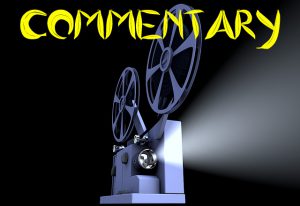Michael Crichton died in 2008 and will therefore never write or direct another film – although if his estate’s policy against selling his books’ rights changes, we might get another “Michael Crichton film” someday. That said, Summer 2022 is a pretty great time for Crichton fans, between “Jurassic World: Dominion,” “Westworld” Season 4 and “Jurassic World: Camp Cretaceous” Season 5 (July 21, Netflix).
While those continuations of his themes and stories are tantalizing, they fall outside the core Crichton canon. He wrote and/or directed and/or provided the source material for 21 films – a number that might surprise casual observers who think of him as a techno-thriller novelist.
Although he focused on novels by the end of his life, his directorial work dates back to “Pursuit” in 1972, a mere three years after he burst onto the book radar with “The Andromeda Strain.” He was behind the camera as late as 1999, doing reshoots for “The 13th Warrior” that some say saved the picture.
Here are my worst-to-first rankings of the films where Crichton contributed at least somewhat to the product (w = writer, d = director, b = based on his book). I’m not including sequels in the “Westworld” and “Jurassic” universes where he had no direct involvement. Unfortunately, I haven’t seen the first entry on this list, but I’ll update these rankings if I do.

N/A. “Extreme Close-Up” (1973, w)
The difficult-to-find “Extreme Close-Up” comes from “Jaws 2” director Jeannot Szwarc. It has an intriguing concept behind it: Crichton aimed to write an X-rated film (in the sense that it would feature nudity) that actually had a good thriller story. Studio involvement made it R-rated, and it obviously didn’t come close to changing the industry like the writer hoped.

20. “Pursuit” (based on “Binary,” 1972, d-b)
Everyone has to start somewhere. With no experience in the industry, Crichton was allowed to direct this adaptation of his own novel, but not write the screenplay (duties fell to Robert Dozier). The novel “Binary,” the last of eight Crichton wrote under the name John Lange, is much better. Even at only 74 minutes long, this ABC TV movie suffers from slow pacing. Dozier swaps out the novel’s message about the importance of advanced government planning for shoulder shrugging about worst-case scenarios. “Pursuit” nonetheless has historical value. Martin Sheen has a small role, and seeing a ticking clock superimposed on the screen makes a viewer think “24’s” creators must have known about this movie. (Full review.)
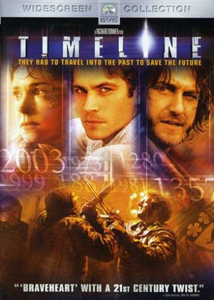
19. “Timeline” (2003, b)
Director Richard Donner is famous for “The Omen,” “Superman” and “Lethal Weapon” but infamous for this late-career effort. Although the novel is beloved by many fans, the film written by Jeff Maguire and George Nolfi is loathed by Crichton disciples and average folks. Heck, Crichton himself hated it. This is the movie that made him stop selling rights to adapt his novels, a policy his estate has continued, with the exception of allowing Steven Spielberg to work on “Dragon Teeth.” Featuring tech such as an ear-implanted translator, this time-hop to medieval France would be difficult to adapt effectively, but Donner doesn’t come close. He delivers a tension-less light romp centered on a horribly miscast Paul Walker. (Full review.)
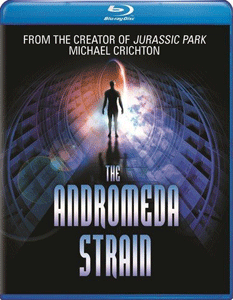
18. “The Andromeda Strain” (1971, b)
Although he only provided the source material, Crichton was featured in the film’s promotional ads, and Nelson Gidding’s screenplay is so in lockstep with the novel that it might as well be written by the author. Unfortunately, in total contrast to the bestseller that put Crichton on the map, director Robert Wise’s 130-minute film is boring. That’s a matter of taste, and many disagree. But I think this is a prime example of why faithful, thorough adaptations aren’t the best approach. Still, just as it takes set-design and pacing influence from “2001,” “Andromeda” is an influential film itself. Wise uses the new technology of split-screen, and the conspiracy foreshadows “The X-Files” right down to false fields of government corn. (Full review.)

17. “Runaway” (1984, w-d)
Like most of the entries toward the bottom of this list, “Runaway” is more interesting to discuss than it is to watch. Starring Tom Selleck as a future cop who deals with out-of-control robots (unleashed by a villain played by Kiss’ Gene Simmons!), “Runaway” should be a lot of fun. But the cheesiness of the robots – including one that serves as a kitchen helper and depressing replacement for Selleck’s wife – is apparent almost every time they are on screen. Exceptions include what we’d now call drones and Roombas – in the latter case, instead of vacuuming it zips along the highway, unleashing mayhem. “Runaway” isn’t helped by coming out soon after “The Terminator,” but its goofiness likely puts it beyond help. (Full review.)
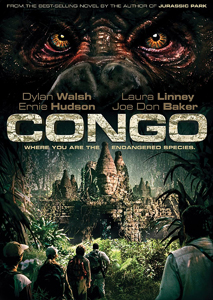
16. “Congo” (1995, b)
Not a favorite among Crichton fans (the book is vastly superior), “Congo” does have a cult following since it plays OK as a B-movie adventure – which actually fits with the author’s idea of a riff on “King Solomon’s Mines.” Interestingly, Crichton did not come up with the high-tech notion of an audio box that immediately translates gorilla Amy’s sign language; that’s an invention of the film from director Frank Marshall and writer John Patrick Shanley. I can deal with that, although I think subtitled sign language would’ve been better. I don’t think the practical gorilla effects are all that bad. My gripe is that “Congo” puts a light, almost humorous spin on everything – an odd choice, especially since 1993’s “Jurassic Park” set a tonal template. Ernie Hudson, Delroy Lindo and Joe Pantoliano give good turns, but it’s not surprising that the latter two wanted to go uncredited. (Full review.)
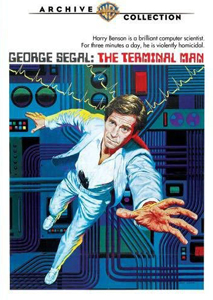
15. “The Terminal Man” (1974, b)
Writer-director Mike Hodges’ adaptation of one of Crichton’s least prescient novels is in the slow-burn style of “The Andromeda Strain.” It’s better, though, because it’s such a personal story for Harry Benson (George Segal). Suffering from brain seizures, he undergoes an experimental procedure (thoroughly chronicled on screen) wherein his brain will receive shocks when it starts to misbehave. The problem is Benson starts to like the shocks and he has to fight against himself. He’s both the hero and the villain, and Segal is game for the difficult role. Brain surgery of this type didn’t come to be, even though Crichton thought it was right around the corner. The film is an interesting path-not-taken for the medical industry. (Full review.)
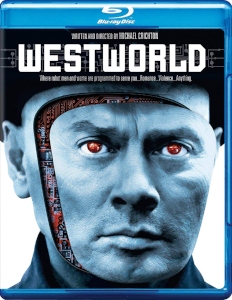
14. “Westworld” (1973, w-d)
More groundbreaking and influential than it is thrilling, this is Crichton’s admirable directorial debut (and second screenwriting effort after “Extreme Close-Up” from earlier that year). It’s an early example of digital effects (the robot Gunslinger’s internal point of view of the landscape looks like early video game graphics), and the theme park gone awry planted seeds for “Jurassic Park.” And, of course, this movie started a franchise. “Futureworld” and “Beyond Westworld” are skippable, but HBO’s current “Westworld” has run with Crichton’s template, exploring what makes humans robotic and what gives robots humanity. (Full review.)
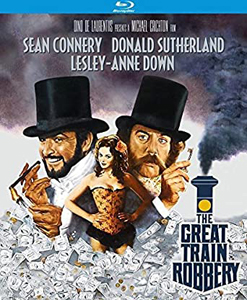
13. “The Great Train Robbery” (1978, w-d-b)
This 19th century English adventure is the only case where Crichton both wrote the screenplay and directed a film based on his own novel. As usual, the novel is superior; its rich peek into the language and customs amid London’s slums doesn’t quite translate. Still, Sean Connery and Donald Sutherland are good as the lead thieves, and Lesley-Anne Down is notably sexy for a dusty old period piece. The detailed buildup to the climactic heist is engrossing. The finale where Connery rides atop a fast-moving train was particularly well-shot and thrilling at the time, although Tom Cruise’s “Mission: Impossible” has since supplanted it in film-goers’ memories. (Full review.)
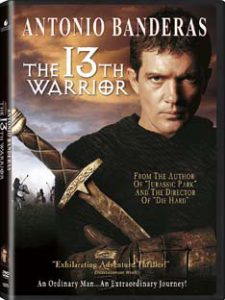
12. “The 13th Warrior” (based on “Eaters of the Dead,” 1999, b)
Even Crichton’s least talked-about works are influential. This narrative riff on the epic poem “Beowulf” launched a renewed interest in Viking fiction. The screenplay by William Wisher Jr. and Warren Lewis doesn’t capture the book’s fatalistic plight of the titular Arab scribe (Antonio Banderas) who is thrown in with a dozen warriors. In a groan-worthy instance, the scribe immediately starts speaking the Viking language (they speak English for viewers’ benefit), having picked it up in a few days of careful listening. But at least the film looks great under the co-direction of Crichton and “Die Hard’s” John McTiernan, including a striking shot of torch-wielding enemies marching through the forest like a huge glow worm. (Full review.)
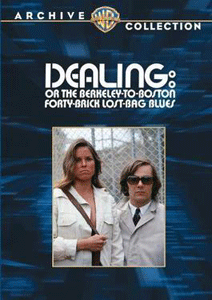
11. “Dealing, or The Berkeley-to-Boston Forty-Brick Lost-Bag Blues” (1972, b)
Thanks to a dry yet apprehensive performance by Robert F. Lyons as a disaffected college student, director Paul Williams’ “Dealing” is a more personal experience than the novel by brothers Michael and Douglas Crichton from a couple years prior. A glowing but underused Barbara Hershey – as Lyons’ girlfriend – further illustrates both the free-love era and the low-grade terror of the government’s corrupt war against marijuana. John Lithgow – as Lyons’ older brother – keeps the plot slowly but steadily moving as “Dealing” illustrates that a black-market pot enterprise can be adventurous and sardonic, but it’ll never be something to joke about. (Full review.)
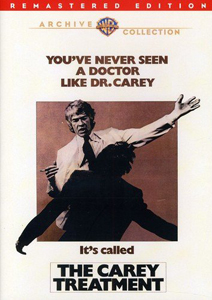
10. “The Carey Treatment” (based on “A Case of Need,” 1972, b)
This adaptation from director Blake Edwards and writers Harriet Frank Jr. and Irving Ravetch uses the plot of Crichton’s novel, the only one he wrote under the name Jeffery Hudson. But it changes the genre from medical thriller to action romp. It’s a vehicle for James Coburn to be a womanizing doctor with a hair-trigger temper toward less-than-cooperative witnesses. In the abstract, this is understandable: Dr. Carey is trying to clear the name of his foreign friend who has been wrongly accused by the biased Boston legal system of performing a botched abortion. But for abortion debate, read the novel (or current headlines). Coburn’s Carey is a precursor to “Lethal Weapon’s” Riggs; he’s unhinged and entertaining, and it’s a little disappointing this didn’t garner sequels. (Full review.)
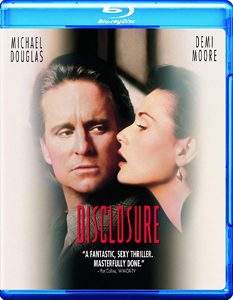
9. “Disclosure” (1994, b)
“Disclosure” was randomly made fun of by TV’s “Big Mouth,” which imagined it as a musical. But in reality, we have a smart novel about the legal and societal gender biases of sexual harassment claims, and this respectable adaptation. A centerpiece sex scene between Demi Moore and Michael Douglas smoothly answers the question of “How can a man be sexually harassed?” The encounter shows that employer-employee relationships are colored by power more than gender. Writer Paul Attanasio and director Barry Levinson are obsessed with VR tech to a degree that’s now silly, especially since it’s beside the core point. More of Dennis Miller as Douglas’ snide co-worker might’ve been nice. Still, this is an engaging, mid-level Crichton adaptation. (Full review.)
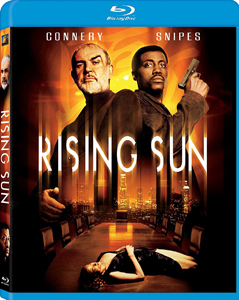
8. “Rising Sun” (1993, w-b)
It’s release in the wake of “Jurassic Park” did box-office favors but no critical favors to “Rising Sun.” The book is better, but the film has aged better. Interestingly, Crichton is one of the screenwriters (along with director Philip Kaufman and Michael Backes), but he was not happy with the changes made to his novel. Notably, the casting of Wesley Snipes subsumes the character of an unconfident young cop. It doesn’t bother me much, since Snipes restrains his action-hero stylings. And he pairs well with Connery as his mentor. The book’s complex exploration of the ways Japan is “buying” the U.S. is simplified for the movie, which is not a bad thing since Crichton’s fears didn’t play out in reality. The film bizarrely changes the book’s ending, but the mystery is gripping, especially when the detectives peruse altered videotape. (Full review.)
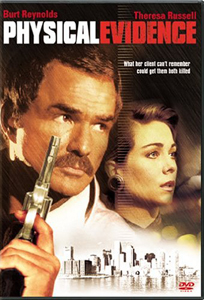
7. “Physical Evidence” (1989, d)
This is among the least talked-about Crichton films, probably because he directs but has nothing to do with the story creation. Bill Phillips pens a very 1980s yarn about a rogue but morally decent cop (Burt Reynolds) who is wrongly accused of a crime. Young lawyer Theresa Russell must deal with her client’s bad attitude even as she aims to clear his name – and sort of falls for him. Crichton directs in a generic 1980s noir style with neon and synthesizers. Simply put, I really like this type of film. While it could be mimicked in a new period piece, the grit and flaws that come from an actual modestly budgeted Eighties production can’t be totally recaptured. (Full review.)
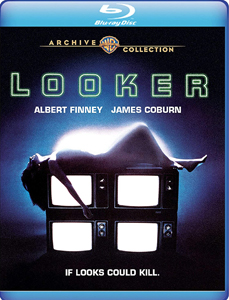
6. “Looker” (1981, w-d)
Crichton’s goal for “Extreme Close-Up” was to use nudity in a legit thriller film, and that fell apart. But “Looker” might’ve sprung from that idea. Although far from X-rated, this film fetishizes Susan Dey as the titular perfect woman. In particular, observe the sequence where she is 3D-scanned into a computer amid sensual lighting and camerawork. “Looker” has its share of things that are funny in retrospect – note the custodial robot and the notion of CGI actors on a real set (real actors on CGI sets became the norm). However, its “image is everything” theme is still a relevant critique of how we select consumer products, along with less frivolous things like political officeholders. (Full review.)

5. “Sphere” (1998, b)
By liking director Levinson’s “Sphere” in 1998, I immediately found myself in the role of apologist for “Sphere.” Even my friend who dislikes the film admits Elliot Goldenthal’s score is excellent. It’s a mesmerizingly perfect fit for the foreboding underwater setting. Yes, Crichton’s book is better, but Attanasio and Stephen Hauser do their darndest to translate all the weirdness happening to Dustin Hoffman, Sharon Stone and Samuel L. Jackson. The trio investigates an alien orb that has perhaps jumped through time, and we as viewers investigate the limits of the human mind to create its own reality. It had been done more cerebrally in 1972’s “Solaris,” but “Sphere” is a fine modernization. (Full review.)
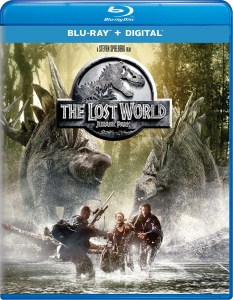
4. “The Lost World: Jurassic Park” (1997, b)
As fans know, Spielberg and Crichton agreed to go their separate ways for the sequel: Each would make their own version of “The Lost World,” one literary, one cinematic. But the film is technically based on the 1995 novel, so I have to include it on this list. And it ranks highly because it’s a good film, a natural follow-up that’s moodier and grittier (and overlong, which is its primary flaw). The story is different, but the David Koepp-penned film isn’t totally dissimilar to Crichton’s novel. Ian Malcolm (Jeff Goldblum, armed with quips) is an increasingly desperate voice of reason among less cautious folks (including his own girlfriend, played by Julianne Moore). The notions of Site B and the high hide, plus the unforgettable sequence of the trailer teetering over the cliff, originate with Crichton. (Full review.)

3. “Coma” (1978, w-d)
Many will disagree, but I find this to be the best-directed film by Crichton, even though it’s not the most famous. Perhaps because other folks had already adapted his “Case of Need,” and maybe because he didn’t have the clout to adapt his own Lange novel “Drug of Choice,” Crichton chooses to adapt Robin Cook’s “Coma.” The pairing of doctors Douglas and Geneviève Bujold is ahead of its time in the way the woman asks for equal treatment in the relationship. A mystery gradually comes into focus as the duo realizes the spate of patients falling into comas has a sinister explanation. If you’re able to go into the film without spoilers (this means not even looking at the poster), you’ll be treated to sci-fi surprises. (Full review.)
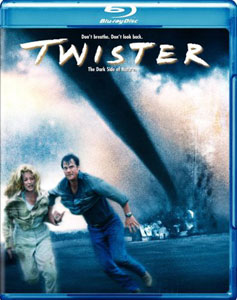
2. “Twister” (1996, w)
I feel a little weird ranking “Twister” so high. Not because it’s bad – it’s a prime example of a film that should be dumb but is instead a masterpiece. Rather, it’s because Crichton by most accounts doesn’t have much to do with the finished product. He’s a producer and a co-writer with Anne-Marie Martin on director Jean de Bont’s blockbuster, but the banter between Bill Paxton and Helen Hunt was largely improvised on the set. The technology of those little sensors that garner measurements from within tornadoes sounds Crichtonian, albeit at the sillier end of the spectrum. Although I make sure to credit writers more than most critics do in this “director’s medium,” I can’t deny that “Twister’s” greatness doesn’t come from its writing. It’s an amazing film because of its spectacle and big personalities. (Full review.)
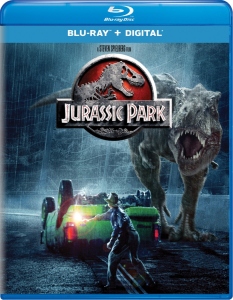
1. “Jurassic Park” (1993, w-b)
Speaking of a “director’s film,” it’s not wrong that Spielberg gets most of the credit for “Jurassic Park.” But it should be noted that Crichton co-wrote the screenplay with Koepp. All those instances of streamlining weren’t merely approved by Crichton, he actually did the streamlining himself. Characters are punched up from the page, notably superstar chaos theorist Malcolm and cool-headed hunter Muldoon (Bob Peck). The novel’s hand-waving explanation of how dino DNA is recovered gets turned into the famous (infamous to some) “Mr. DNA” sequence. It’s still hand-waving, but it colors the character of John Hammond (Richard Attenborough), giving him a ridiculous but lovable air that undercuts any sense of villainy. We can dole out individual blame, but by presenting cloned dinosaurs with so much infectious joy, Spielberg, Koepp and Crichton slyly scold the viewer: It’s a universal human trait to look before we leap. (Full review.)
Click here to visit our “Jurassic Park” Zone.


